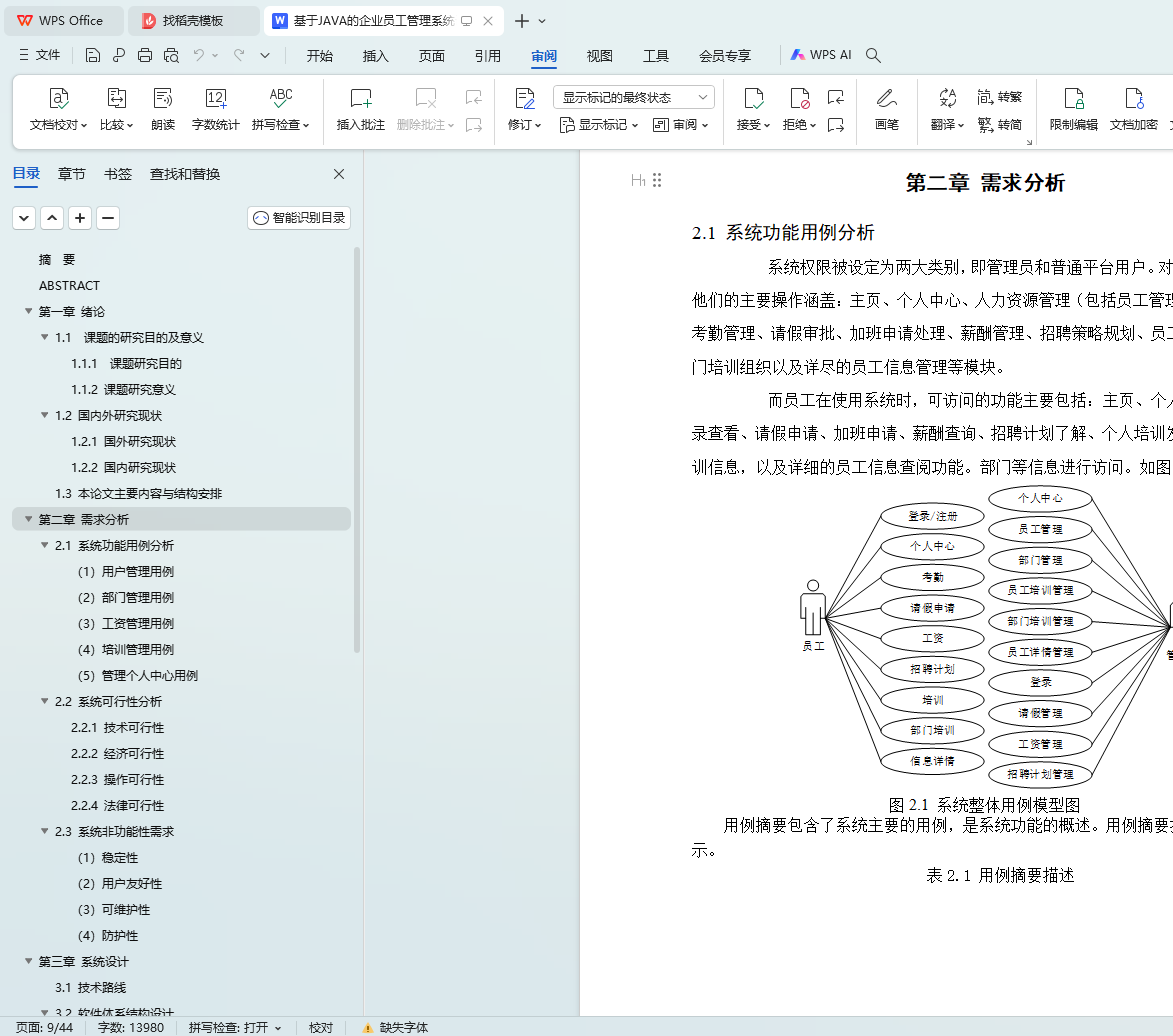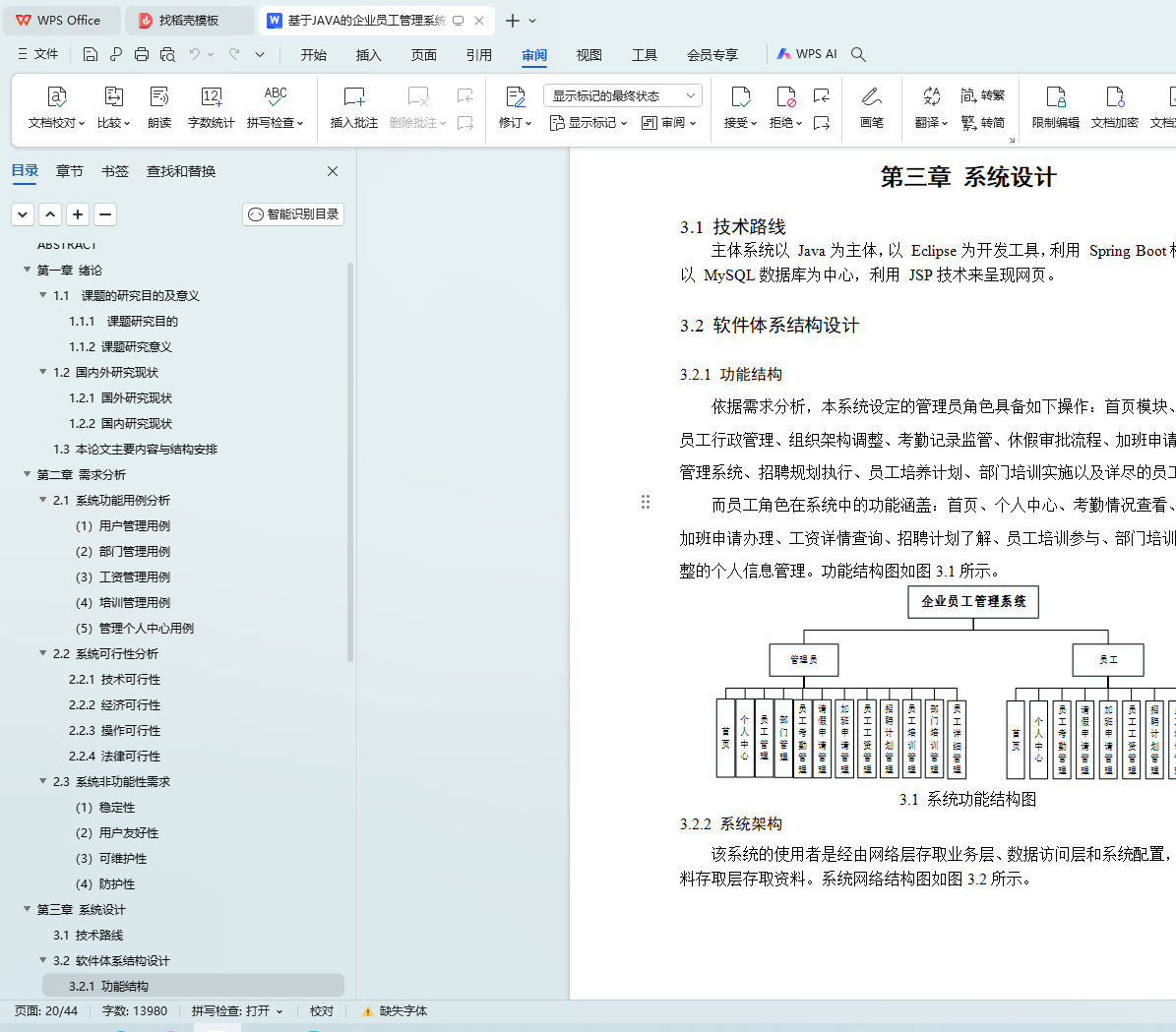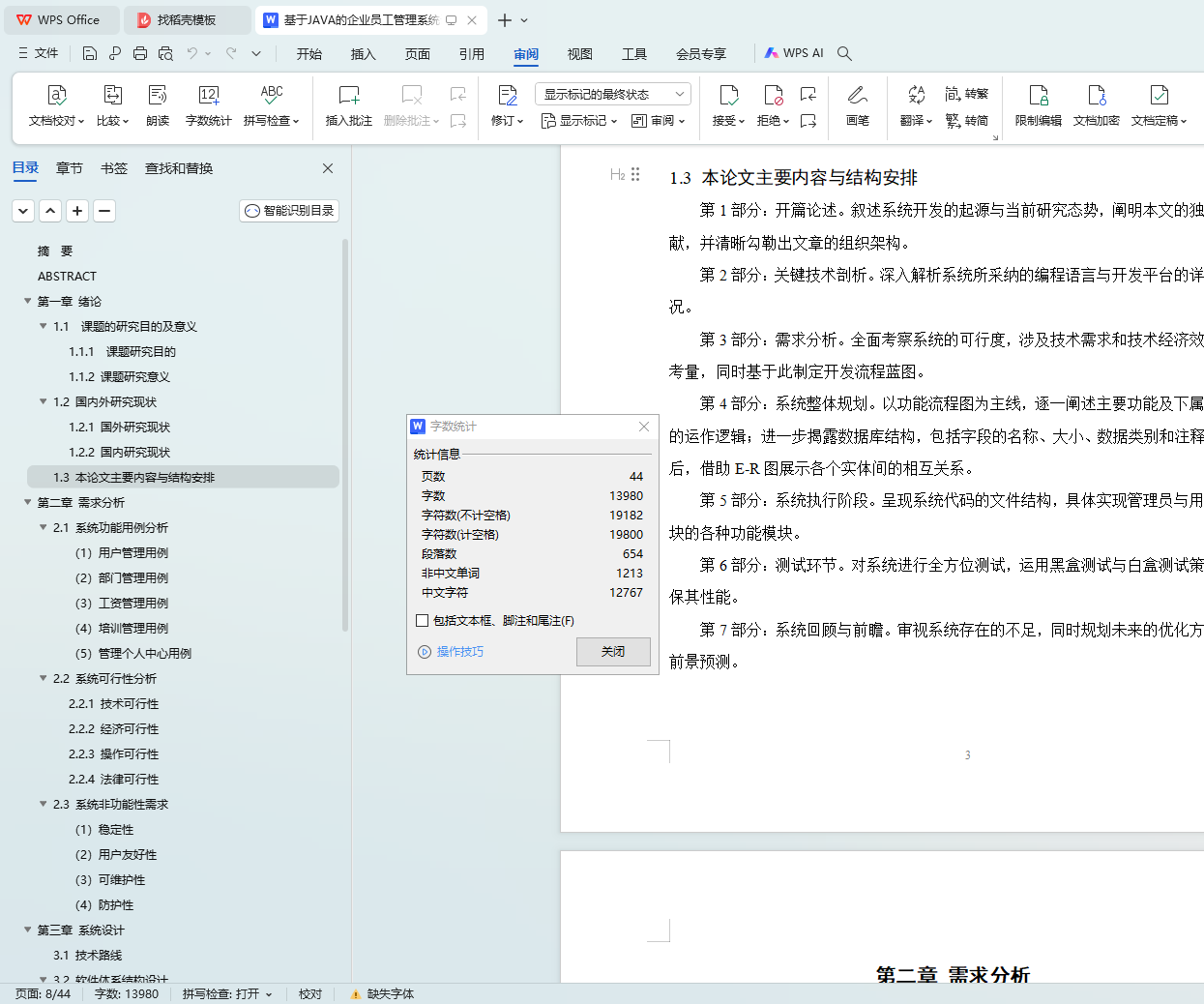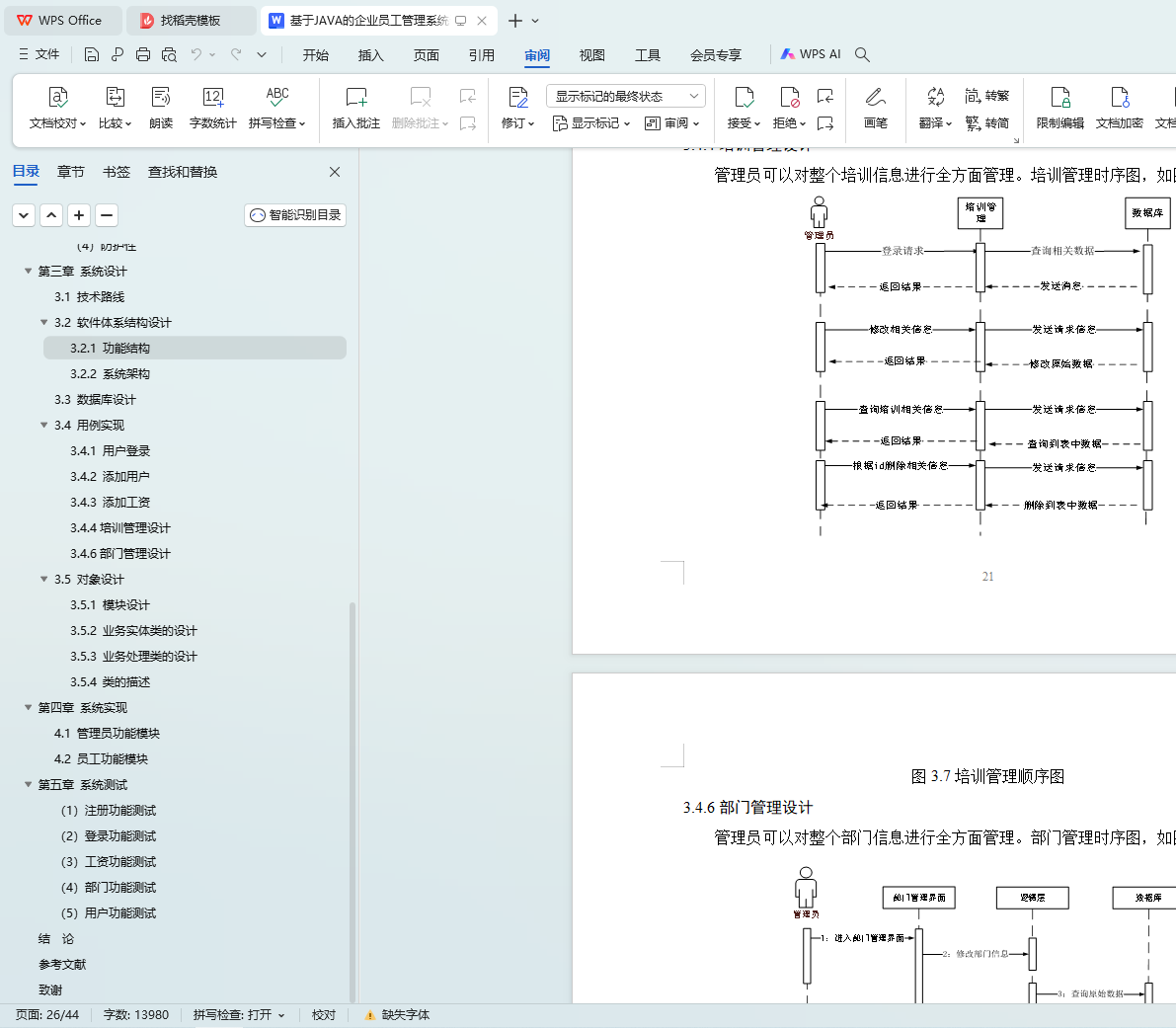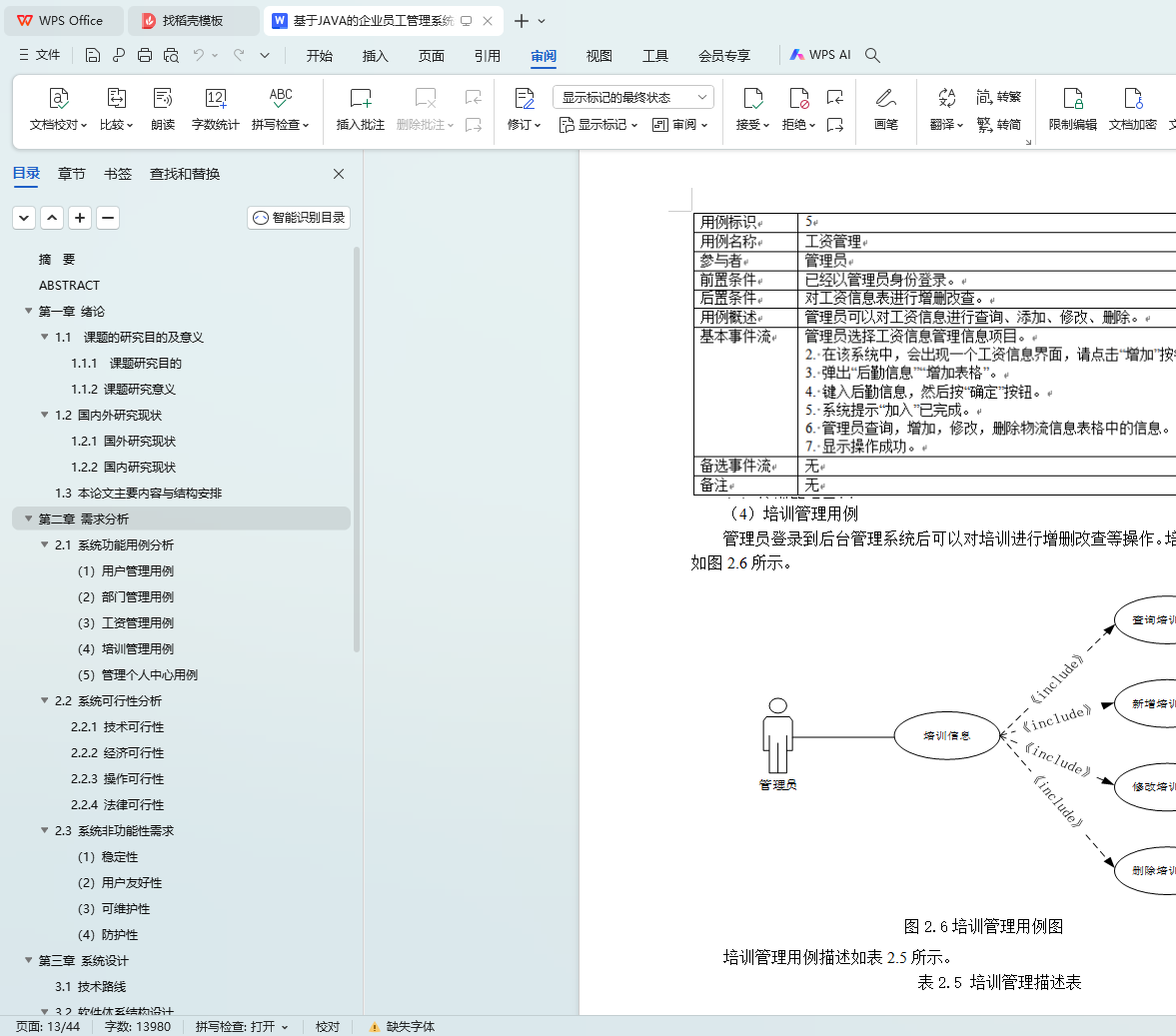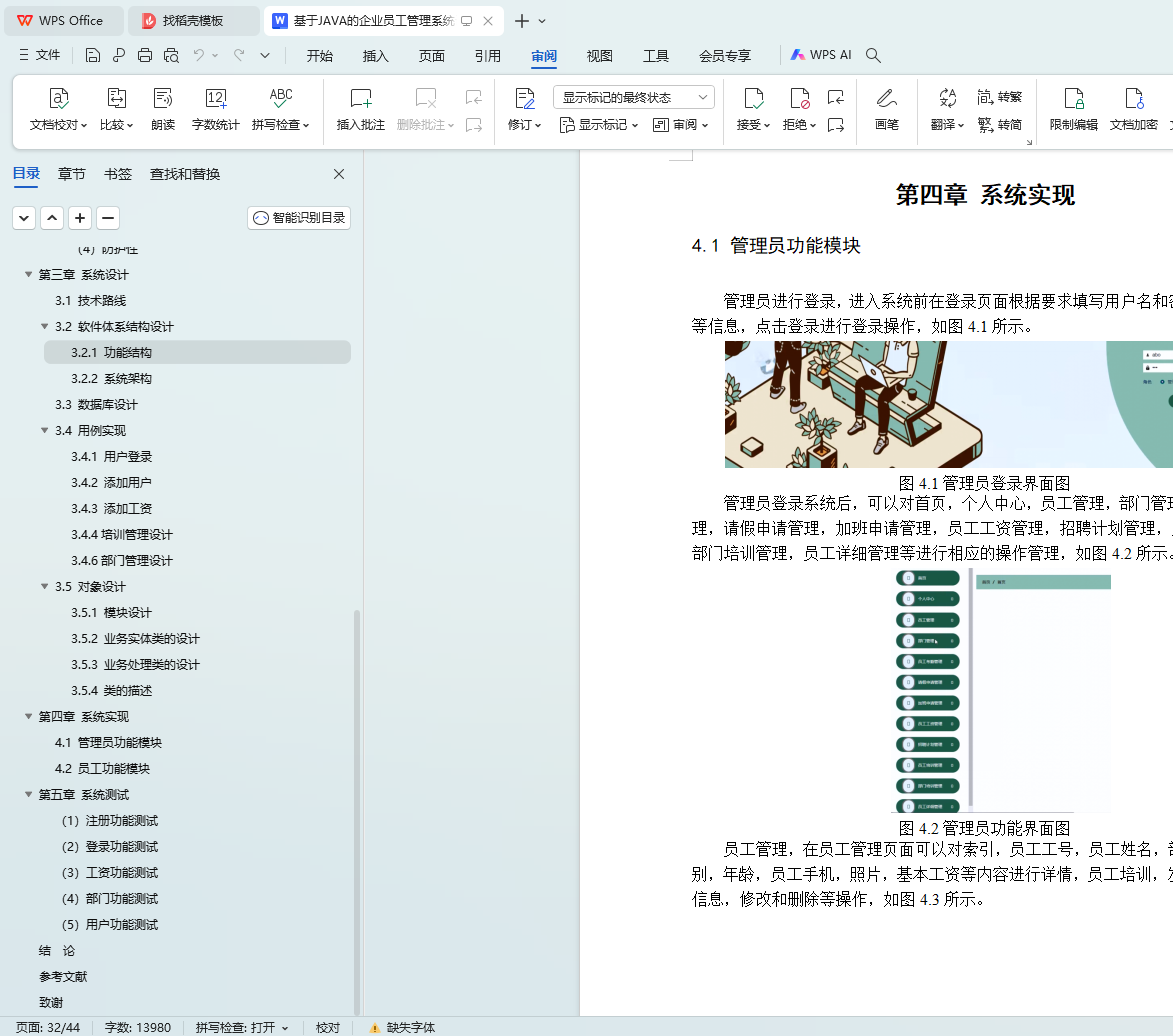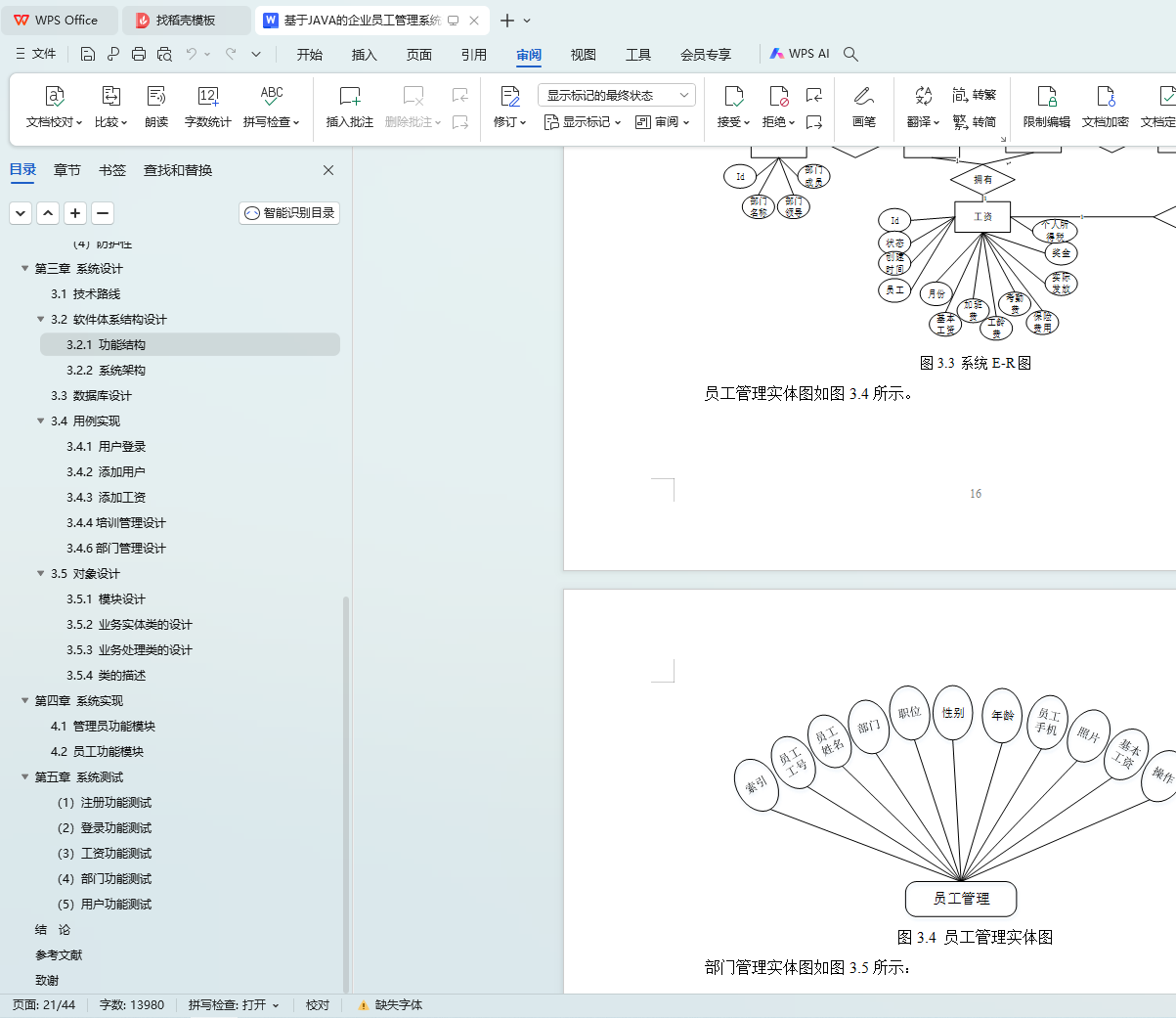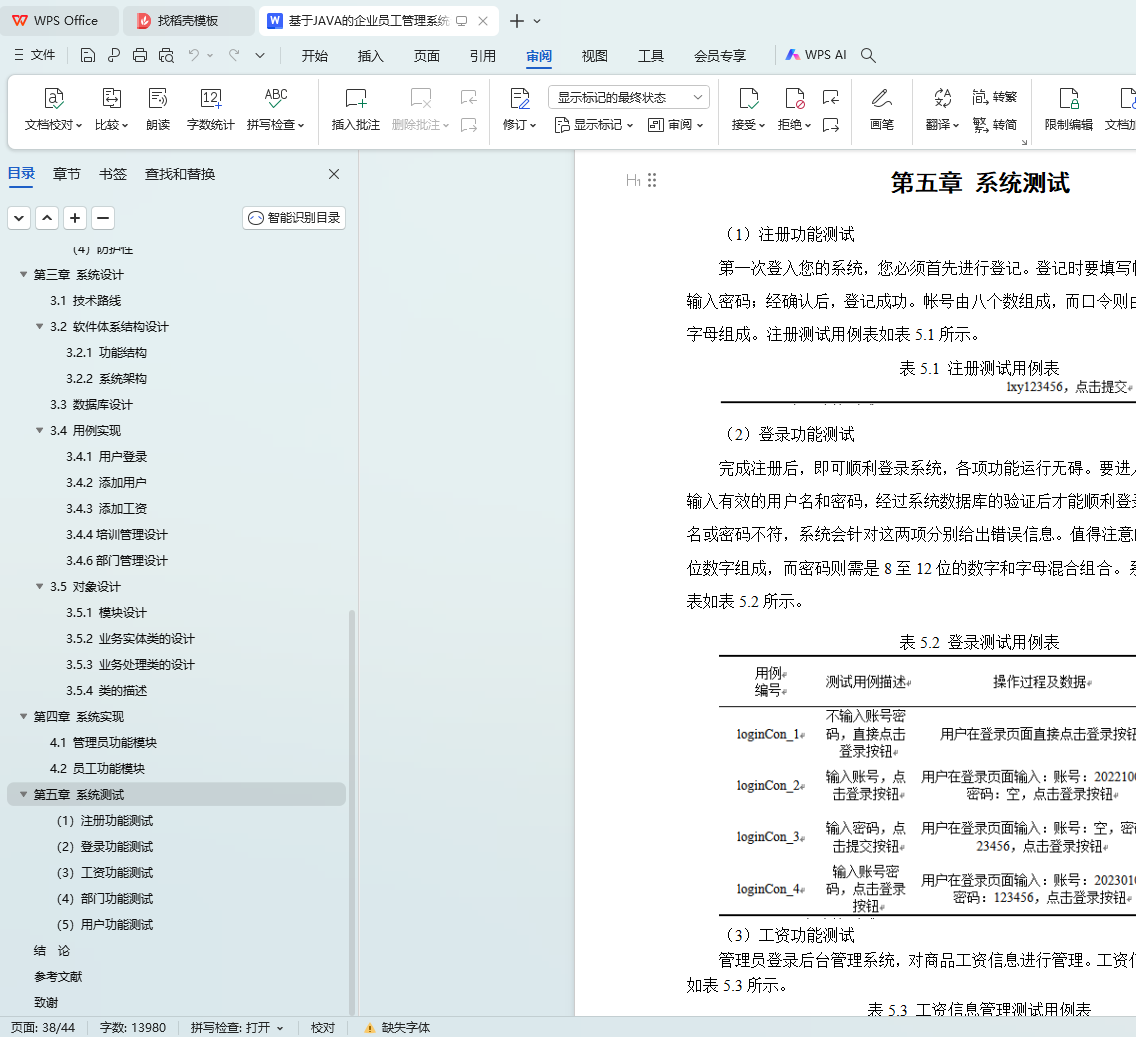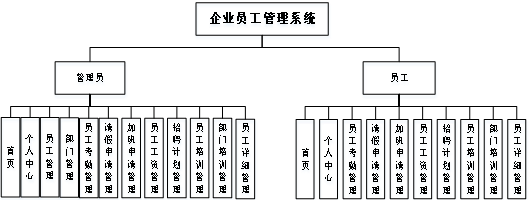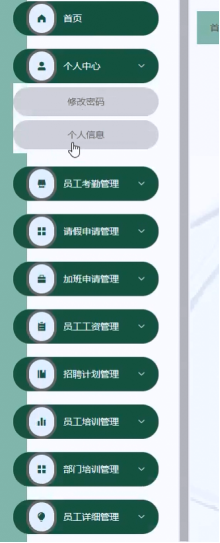基于JAVA的企业员工管理系统设计与实现 毕业论文
基于JAVA的企业员工管理系统设计与实现
摘 要
在当今企业的核心运营中,员工管理扮演着至关重要的角色,它的成效直接影响企业的活力与进步。与此同时,计算机科技作为时代的驱动力,引领着新的潮流,其迅猛发展不仅丰富了人们的日常生活,还极大地推动了各行各业的革新,尤其在企业员工管理领域,计算机的应用为人力资源管理提供了高效的信息处理工具。首先,论文明确阐述了研究的核心内容,紧接着深入探讨了系统需求理解,明确了“目标是什么”,这涉及业务策略解析、工作流程剖析及实例情境的考察,以精准定位系统的需求。在需求明确的基础上,系统设计紧随其后,涵盖了软件结构模型的选择、整体功能模块的规划以及数据库构建。本项目采用B/S架构模式,并结合Java技术,功能模块设计遵循自下而上的分层逻辑。然后,实际操作中,系统得以实施,通过编写代码将设想转化为现实功能。
关键词:员工信息管理;bootStrap框架;Java语言;MySQL数据库
Design and implementation of enterprise employee management system based on JAVA
ABSTRACT
In the core operation of today's enterprise, employee management plays a crucial role, and its effectiveness directly affects the vitality and progress of the enterprise. At the same time, computer technology, as the driving force of The Times, leads the new trend. Its rapid development not only enriches People's Daily life, but also greatly promotes the innovation of all walks of life, especially in the field of enterprise staff management, the application of computer provides efficient information processing tools for human resource management. First of all, the paper clearly elaborated the core content of the research, followed by an in-depth discussion of the understanding of the system requirements, and made clear "what is the goal", which involves business strategy analysis, workflow analysis and case situation investigation, so as to accurately locate the requirements of the system. On the basis of clear requirements, the system design follows, covering the selection of software structure model, the planning of overall functional modules and database construction. This project adopts the B / S architecture mode, combined with the Java technology, and the functional module design follows the bottom-up hierarchical logic. Then, in practice, the system is implemented to translate the idea into realistic functions by writing code.
KEY WORDS:Employee Information;Management bootStrap Framework;Java Language;MySQL database
目录

